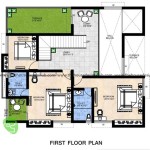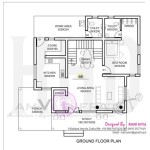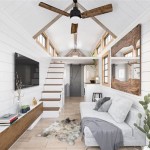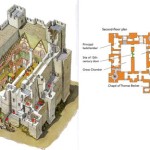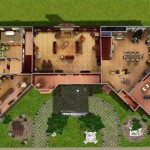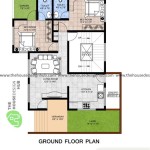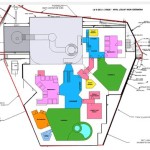Cob House Plan: An Introduction to Building with Earth
A cob house plan is a blueprint for constructing a home using cob, a traditional building material made from a mixture of earth, water, and straw. Cob construction has been practiced for centuries, particularly in Europe, Asia, and the Middle East, where it has been used to create durable and energy-efficient dwellings. In recent years, there has been a renewed interest in cob building as a sustainable and eco-friendly alternative to conventional construction methods.
A cob house plan serves as a guide for the builder, outlining the structure, dimensions, and design of the house. It provides a detailed account of the different components, from the foundation to the roof, and specifies the materials needed for each stage of the construction process. While a cob house plan can be relatively simple for a small structure, more complex plans may require the expertise of an experienced architect or cob builder.
Benefits of Building a Cob House
Cob houses offer numerous benefits, making them a popular choice for environmentally conscious homeowners. Some of the key advantages include:
Sustainability and Eco-Friendliness
Cob is a natural and readily available material, making it a sustainable building choice. It requires minimal processing and transportation, reducing the carbon footprint compared to traditional materials like concrete or bricks. Cob construction also aligns with the principles of sustainable living by minimizing the use of non-renewable resources.
Energy Efficiency
Cob houses are highly energy efficient due to the excellent thermal mass of the material. Cob walls can store heat during the day and release it gradually at night, helping to maintain a comfortable temperature inside the house. This natural insulation reduces the need for heating and cooling systems, leading to lower energy consumption and reduced utility bills.
Health and Well-being
Cob houses are considered to be healthier than conventional dwellings. The natural materials used in cob construction do not contain harmful chemicals or VOCs (volatile organic compounds) that can negatively impact indoor air quality. The breathable nature of the walls allows for natural ventilation, promoting a healthier and more comfortable living environment.
Aesthetic Appeal
Cob houses are renowned for their unique and rustic aesthetic. The natural texture of the cob walls adds warmth and character to the interior and exterior of the dwelling. Cob builders can sculpt and shape the walls to create interesting architectural features, resulting in a home with a distinctive and timeless appeal.
Designing a Cob House Plan
Designing a cob house plan involves careful consideration of several factors:
Site Selection
The ideal location for a cob house should have well-drained soil, as excess moisture can compromise the structural integrity of the walls. It's also important to consider the climate, as cob houses are best suited for regions with mild to moderate temperatures. The presence of shade trees can help to regulate the temperature inside the house and prevent overheating.
Foundation
A robust foundation is essential for supporting the weight of a cob house. The foundation should be designed to prevent moisture from wicking into the walls. Options include a concrete slab, a stone foundation, or a raised platform. The foundation should be laid level and provide adequate support for the construction.
Wall Design
Cob walls can be designed using various techniques, including thick, monolithic walls, or a combination of cob and other materials. The thickness of the walls will depend on the climate and the desired level of insulation. The design should incorporate features such as windows, doors, and openings for ventilation and natural light.
Roofing
The roof of a cob house can be made from a variety of materials, including timber, thatch, or tiles. The chosen material should be durable and provide adequate protection from the elements. The roof design should accommodate the weight of the materials and ensure proper drainage.
Construction Process
The construction of a cob house is a labor-intensive process that requires patience and attention to detail. The steps involved include:
Mixing the Cob
Cob is typically mixed on-site using a combination of earth, water, and straw. The proportions of each ingredient will vary depending on the type of soil and the desired consistency. The mixture should be thoroughly blended to create a cohesive and workable material.
Building the Walls
Cob walls are built by layering the mixture onto a foundation, carefully compacting each layer as it is applied. The walls can be shaped and sculpted as they dry. The building process is typically done in stages, allowing each layer to dry before adding the next.
Finishing the Walls
Once the walls are dry, they can be finished with a variety of techniques. Common methods include plastering, limewashing, or applying a decorative coating. These finishes provide a protective layer and enhance the aesthetic appeal of the walls.
Conclusion
A cob house plan provides a roadmap for building a sustainable, energy-efficient, and beautiful home. By understanding the benefits and considerations involved in cob construction, individuals can make informed decisions about this unique and traditional building method.

Cob House Floor Plans For The Home

Cob House Plan Inspiration Tasarım Dekorasyon

Image Detail For Cob House Plans Submited Images Pic 2 Fly Floor

English Earthbag Cottage Plan Cob House Plans Round

Solar Oval One Plan

Seismic Engineering Diagram Cob House Plans Eco Design

Cob Houses Design For Me

Tiny Cob House Plans The Freeman This

Solar Oval One Plan

Cob House Plans Natural Building Designs This

